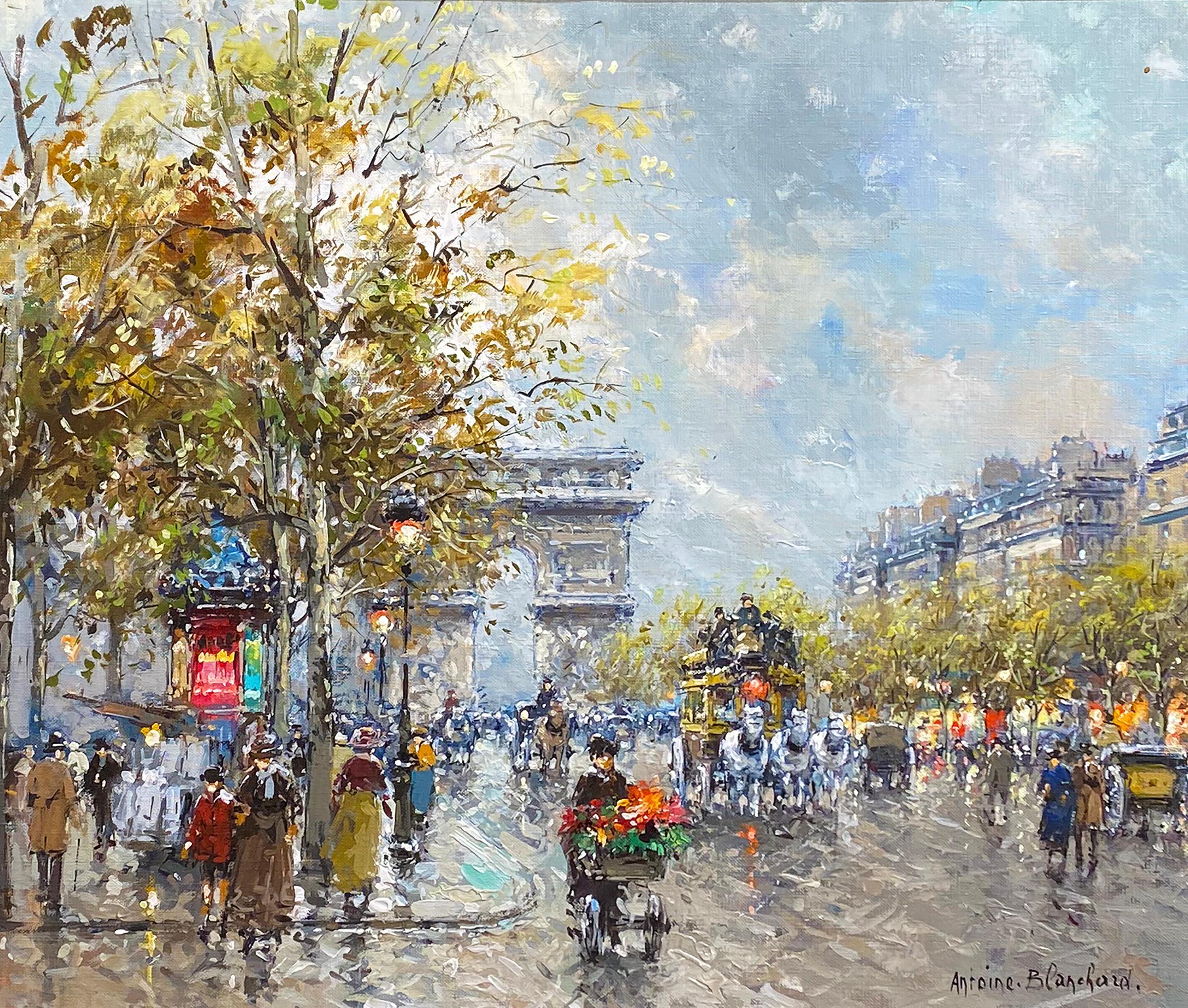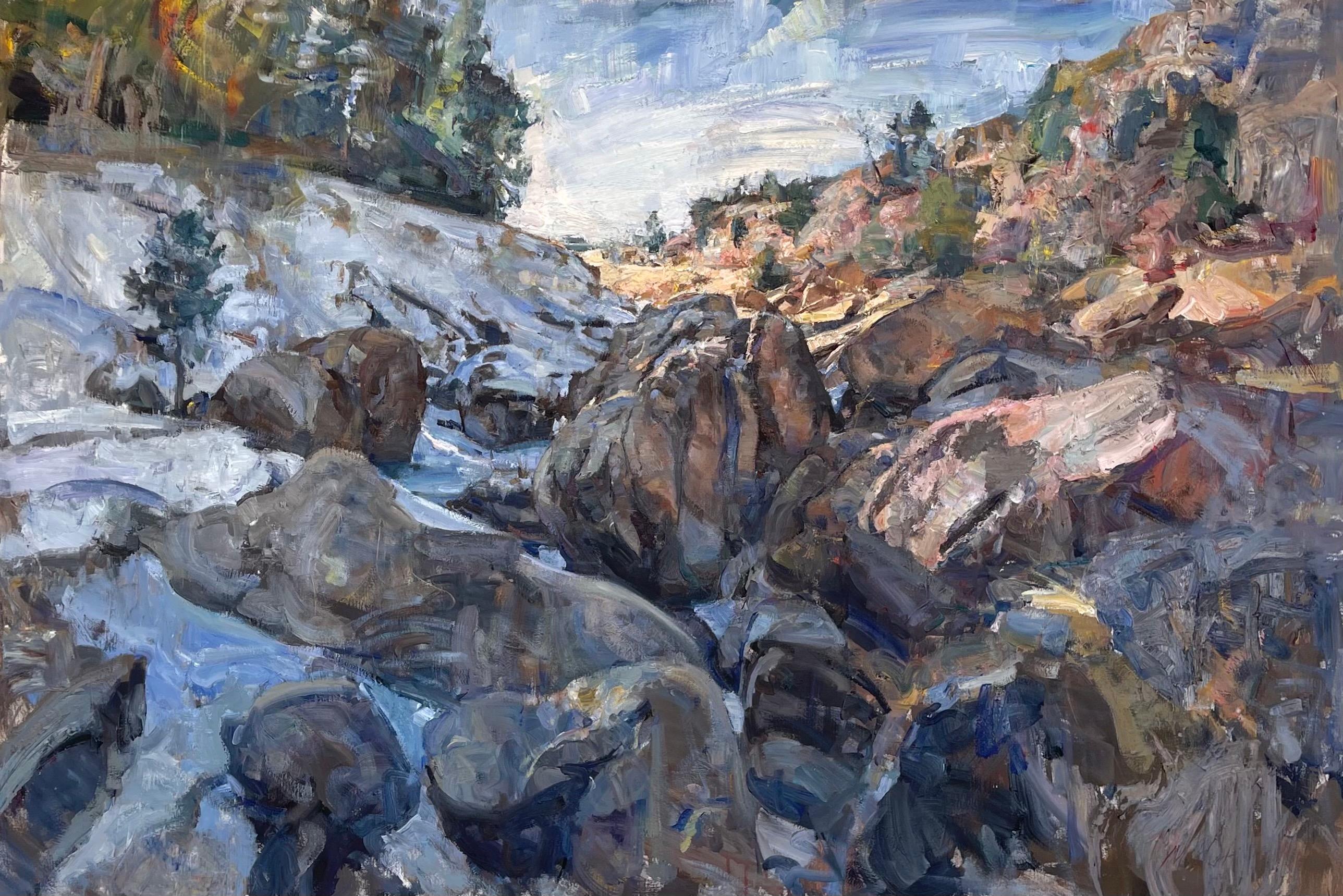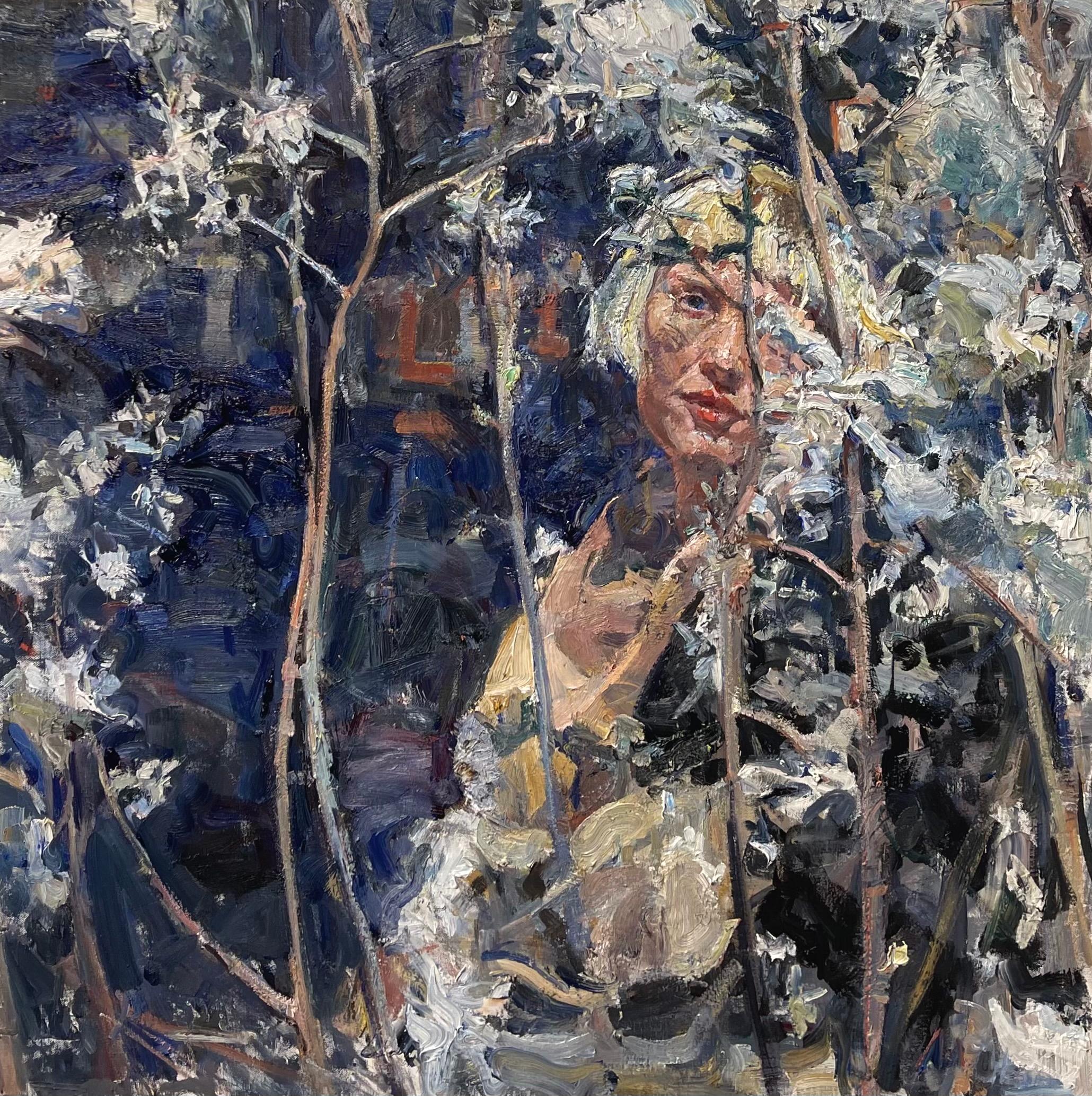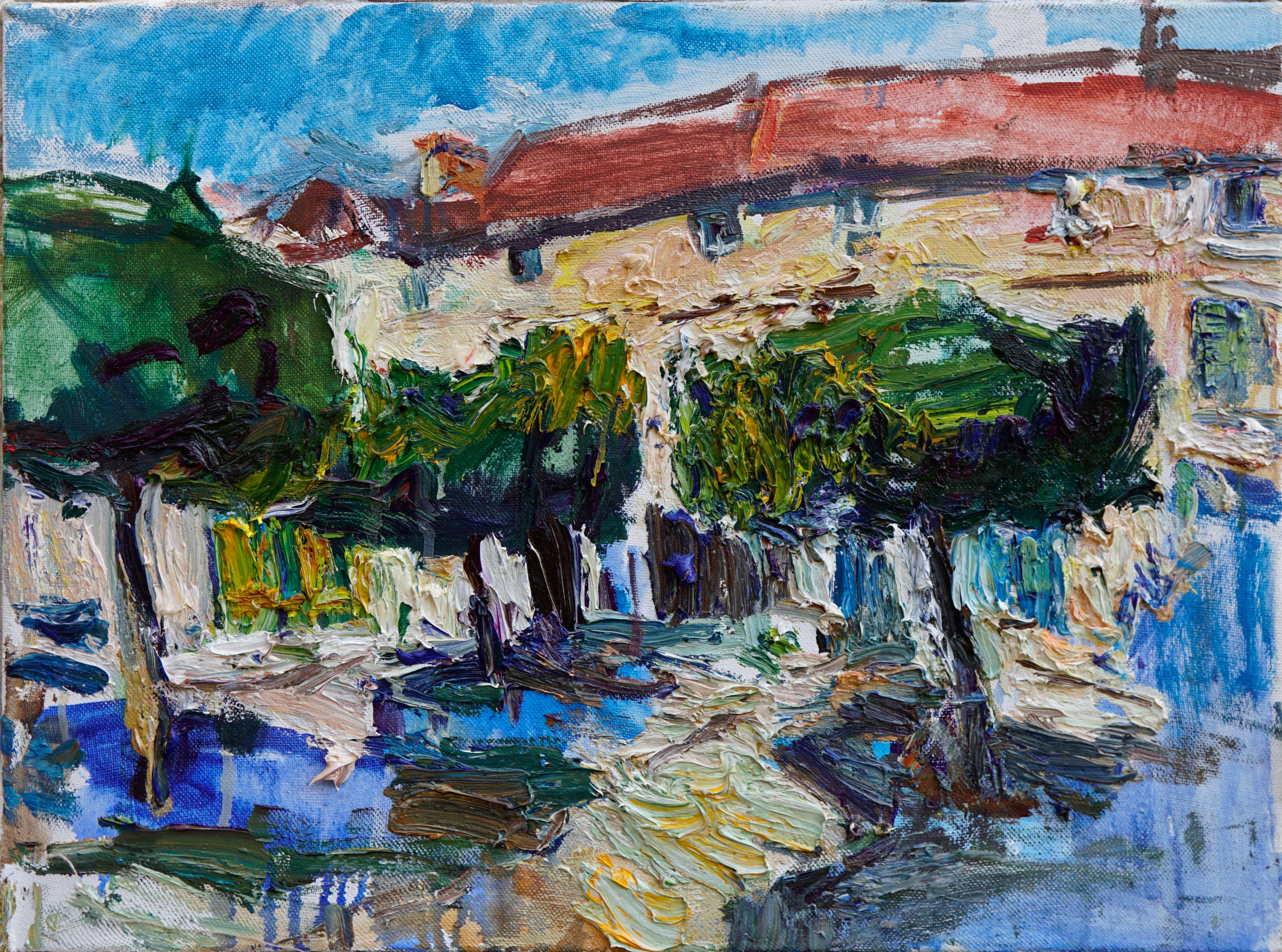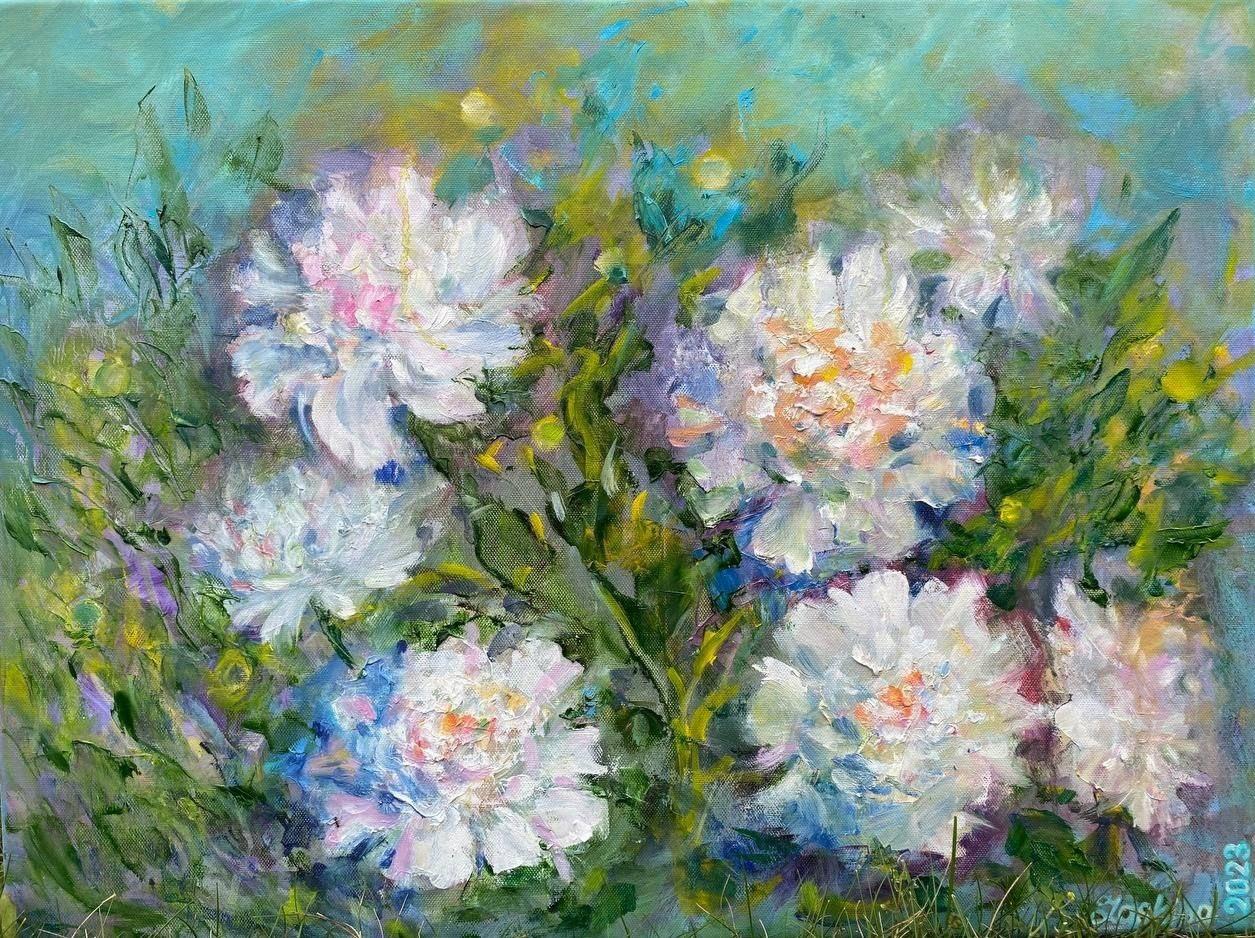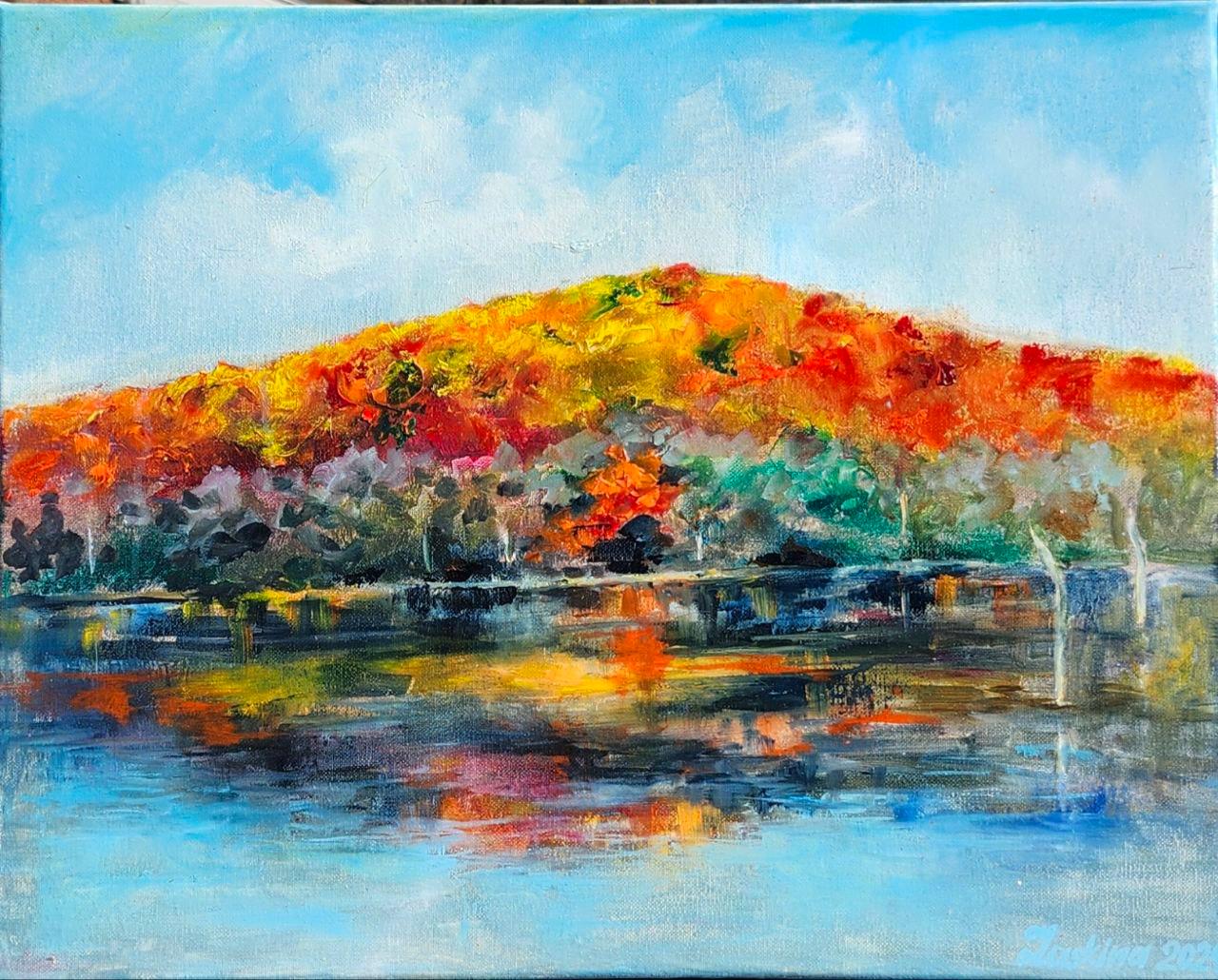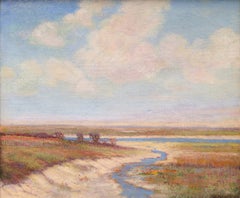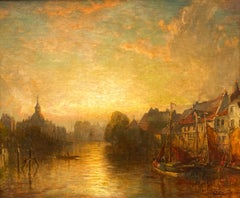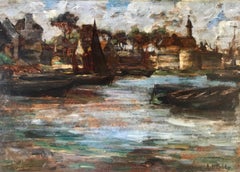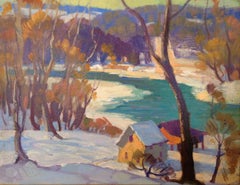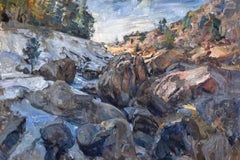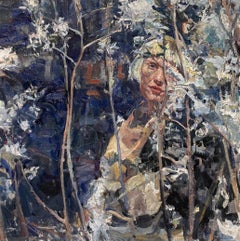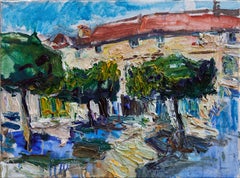Items Similar to “Bord de L’Eau”
Want more images or videos?
Request additional images or videos from the seller
1 of 13
Albert Regagnon “Bord de L’Eau”1906
1906
About the Item
Here for your consideration is a wonderful oil on canvas painting by the well known French artist, Albert Regagnon. Titled verso, “Bord de L’’Eau” (The Riverside) Signed and dated lower left, 1906. Condition is excellent. Original period frame in fine condition. Mild wear consistent with age. Overall framed measurements are 20.5 by 24 inches. Provenance: Joseph M. de Gimme Gallery, Grosse Point, Michigan. (label verso)
Albert Regagnon, French (1874-1961)
Regagnon received many honors for his body of painting during his long and productive career, and exhibited regularly at the Paris Salons. Regagnons’ fascination for the Barbizon painters is demonstrated in this painting with his use of a variation of lush greens, filtered light and subtle shadows The artist’s application of short brush strokes of color combines to create an uneven texture of the painted surface, as well as the overall tranquility of the painting
- Creator:Albert Regagnon (1874 - 1961, French)
- Creation Year:1906
- Dimensions:Height: 13 in (33.02 cm)Width: 17.25 in (43.82 cm)Depth: 2 in (5.08 cm)
- Medium:
- Movement & Style:
- Period:
- Condition:Excellent condition; no restorations. Original frame in fine condition with outstanding provenance.
- Gallery Location:Southampton, NY
- Reference Number:1stDibs: LU1419815902
About the Seller
5.0
Platinum Seller
Premium sellers with a 4.7+ rating and 24-hour response times
Established in 1977
1stDibs seller since 2013
522 sales on 1stDibs
Typical response time: 1 hour
- ShippingRetrieving quote...Shipping from: Southampton, NY
- Return Policy
Authenticity Guarantee
In the unlikely event there’s an issue with an item’s authenticity, contact us within 1 year for a full refund. DetailsMoney-Back Guarantee
If your item is not as described, is damaged in transit, or does not arrive, contact us within 7 days for a full refund. Details24-Hour Cancellation
You have a 24-hour grace period in which to reconsider your purchase, with no questions asked.Vetted Professional Sellers
Our world-class sellers must adhere to strict standards for service and quality, maintaining the integrity of our listings.Price-Match Guarantee
If you find that a seller listed the same item for a lower price elsewhere, we’ll match it.Trusted Global Delivery
Our best-in-class carrier network provides specialized shipping options worldwide, including custom delivery.More From This Seller
View All“Long View”
By Louis H. Richardson
Located in Southampton, NY
Beautiful oil on canvas painting by the American Impressionist artist Louis H. Richardson. Signed lower right and dated 1917. Overall framed measurements in original Newcomb Macklin frame 27.5 by 31.25 inches.
Louis H Richardson [1853-1923]
American Impressionist :
Louis H. Richardson was born in New Bedford, MA, where he lived and worked until his death in 1923. Richardson was a self-taught Impressionist artist, most known for his sensitive paintings of the landscape surrounding New Bedford and the Dartmouth area. From his shanty shack studio at Salters Point in South Dartmouth, he would paint the wetlands and feature water, trees, the sky and land. In 1917, Richardson was part of a two-man show in New York City with artist Clifford W. Ashley at the Arlington Art Galleries on Madison Avenue. Of his show, The New Bedford Sunday Standard wrote: “His style is so absolutely his own that the simple mention of his name recalls to mind vividly the salt marshes, the soft browns of silent reaches near the sea, wind-blown inlets, flying clouds. … Some of it reaches a height of charm and truth that it would be impossible to surpass.” Richardson believed in the art community and founded the New Bedford Arts Club and its successor the New Bedford Fine Arts Society.
When not painting, Richardson worked at the New Bedford Water Company and later as a plumbing inspector for the city’s Board of Health. He was an avid baseball player and would be known as “the Babe Ruth of New Bedford.”
On his death, the local newspaper declared him “one of the best-known artists in New Bedford” and “one of the art pioneers in building up a more widespread appreciation of art in the community.”
His work is in the permanent collection of the New Bedford Whaling Museum...
Category
1910s Impressionist Landscape Paintings
Materials
Canvas, Oil
“Amsterdam Harbor at Sunset”
By George McCord
Located in Southampton, NY
Very well executed tonalist work of a sunset over Amsterdam Harbor in Holland by the well known American artist, George McCord. Signed lower right with A.N.A following the signature which stands for Associate of the National Academy. Circa 1890. Condition is good. The painting is oil on canvas (relined) and is housed in an semi-antique style gold ornate frame. Frame is in very good condition. Overall framed measurements are 30 by 35 inches. Provenance: A Sarasota, Florida estate.
GEORGE HERBERT McCORD
(1848-1909)
Born on August 1, 1848 in Manhattan, New York, George Herbert McCord was considered a central figure of the second generation Hudson River painters. While McCord described himself as mostly self-taught, he attended the Hudson River Institute and the Claverack Academy in New York. He also spent time studying in the studios of Samuel Morse...
Category
1880s Impressionist Landscape Paintings
Materials
Canvas, Oil
$3,800 Sale Price
20% Off
“Concarneau, Brittany”
By Aloysius O’Kelly
Located in Southampton, NY
Oil on board painting by Aloysius O’Kelly of Concarneau, Brittany. Signed bottom right and titled verso. Condition: Good. Provenance: Sarasota estate. Overall sized framed in o...
Category
Early 1900s Impressionist Landscape Paintings
Materials
Oil, Board
$3,000 Sale Price
20% Off
Mill Creek
By Fern Isabel Coppedge
Located in Southampton, NY
Oil on artist board
Circa 1930 -1935
Signed verso and dedicated to JF (possibly John Folinsbee, fellow artist and neighbor). Overall size encased in custom 22K gold leaf frame wit...
Category
1930s Impressionist Landscape Paintings
Materials
Oil, Board
“La Jetee” (The Pier)
By Henri Saintin
Located in Southampton, NY
Beautiful painting of the figures and ships along the French coast and pier by the well known French artist, Henri Saintin. Signed lower right. Oil on wooden panel. Artist wax seal...
Category
1870s Impressionist Landscape Paintings
Materials
Oil, Board
$3,360 Sale Price
20% Off
“Pennsylvania Beauty”
By Edmund Darch Lewis
Located in Southampton, NY
Here for your consideration is an outstanding example of the landscape mastery of American artist, Edmund Darch Lewis. Fabulous light and clarity of the bucolic scene. Signed lower right and dated 1870. Recently cleaned. Several old patches verso with corresponding in paint. Condition is very good The painting is framed in its original gold leaf period frame which is in fine condition. Overall measurements are 35 by 46.5 inches.
Edmund Darch Lewis was born in Philadelphia, the son of a prominent businessman. According to family tradition he was educated at a private school...
Category
1870s Academic Landscape Paintings
Materials
Canvas, Oil
$13,200 Sale Price
20% Off
You May Also Like
Avenue des Champs-Elysses, Paris
By Antoine Blanchard
Located in Missouri, MO
Antoine Blanchard (French 1910-1988)
"Avenue des Champs-Elysses, Paris"
Oil on Canvas
Signed
approx 18 x 22 (site)
approx 26.5 x 30 (framed)
Antoine Blanchard (c.1910-1988) was a prolific and successful Neo-Impressionist painter who specialized in nostalgic scenes of Fin de Siècle Paris. Inspired by the subjects as well as the success of earlier painters of Parisian life like E. Galien Laloue (1854-1941), Edouard Cortès (1882-1969), Jean Béraud (1849-1935) and Luigi Loir (1845-1916), Blanchard painted hundreds of views of the “City of Light.” In the late 1950s, his street scenes were exported to the United States and the United Kingdom, where they were sold briskly to collectors. By the1960s, Blanchard paintings were bringing several hundred dollars in galleries, so while they were not inexpensive, they were affordable to collectors who loved Parisian scenes but who could not afford the works of Cortes or one of the other French painters known for their views of Paris in Belle Époque. Eventually Blanchard’s more delicate, feathery pastel-toned scenes of rain-swept Paris became sought after in their own right and, when he died, he was considered the last of what the dealers described as the École de Paris or “School of Paris” painters.
The most salient fact about the life and career of the painter Antoine Blanchard was that he was actually born Marcel Masson, the son of a furniture maker who lived in the scenic Loire Valley, south of Paris, where the French nobility had their chateaus. The date that is usually given for Blanchard’s birth is November 15, 1910. However, there has been some speculation that he was born even later, perhaps in 1918, but some of the facts of his life have always been clouded by early biographies that claimed even earlier dates for his birth, so that he would seem to be seen as a contemporary of the famous Belle Époque painters rather than a post-war interpreter of Paris.
Blanchard grew up in the hardscrabble years following the First World War. Because he was artistically talented, he was sent first to the nearby city of Blois, the capital of the Loir-et-Cher Département, for artistic training and then to the École des Beaux-Arts in Rennes, on the Brittany peninsula, where he received a classical art education. By some accounts Blanchard also studied in Paris, where the historic École des Beaux-Arts is located, but the depth of his study and the style of his earliest work will require further research.
Marcel Masson was married in 1939, as war clouds gathered on the French horizon. He was drafted for service in the French Army and participated in the short and futile struggle against the invading German Panzers before returning to his family and his art during the Nazi occupation. A daughter, Nicole, was born in 1944 with a second daughter, Eveline, who eventually came to the United States, following in 1946.
Masson’s early art career was interrupted, first by World War II and later by the necessity of keeping his father’s workshop running in the years after his death. By the late 1940s, though, Masson returned to his art and moved to Paris in order to further his career.
Exactly when Marcel Masson adopted the pseudonym Antoine Blanchard is not known, nor are we aware of his motivations for adopting a nom de plume, but the practice was not unusual for French painters. In most cases a pseudonym was adopted because the artist had contractual obligations with more than one agent or dealer. Another motivation could be to obscure the scope of a sizable artistic production. Dealers in that era also liked to keep an artist under their thumb, so a pseudonym was a way for Blanchard’s dealers to tuck him away, out of the sight of their competitors.
Like many painters before him Masson may have initially painted different subjects under different names. Marcel Masson neé Blanchard would have been well aware that the famous and prolific French painter E. Galien Laloue (1854-1941) painted under no less than four names – three pseudonyms in addition to name he was christened with – and so the adoption of another name was probably not seen as a liability to him.
However, he apparently never took the step to register his pseudonym, which was possible in France, to legally restrict its use. In any event, by the 1950s Marcel Masson had become “Antoine Blanchard,” a painter of Parisian views. With the aging Edouard Cortès (1882-1969) as a model, Blanchard began to specialize in romanticized scenes of la ville des lumières, or the “City of Light.”
However, instead of painting contemporary Paris, the crowded metropolis of his own time, which he may have felt was lacking in romance, he chose to look at the French capital through the rear-view mirror. So Blanchard became known for his depictions of the hurly-burly life of Paris in the Belle Époque. For inspiration, he is said to have collected old sepia-toned postcards of life in La Belle Époque (“The Beautiul Era”), the long period of peace and relative prosperity between the end of the Franco-Prussian War and the horrors of the Paris Commune in 1871 and the start of the mass bloodshed of the First World War in August of 1914. In addition, however, the paintings of Loir, Baraud, Laloue and Cortès could be found and studied in the flea markets of Paris as well as the auctions at the l’Hôtel Drouot.
Reminders of the Belle Epoch were thus all around Blanchard, and of course the architecture that he painted had survived the Second World War intact, because Paris was spared bombing or a siege by the allies. Soon he was painting the horse-drawn omnibuses that took turn-of-the-century Parisians on longer trips throughout the city as well as the tradesmen, children and fashionably dressed ladies that populated Baron Haussmann’s Grand Boulevards.
Blanchard’s early work was clearly modeled after the paintings of Edouard Cortès, but he was always his own man and never a slavish copyist. These paintings were darker in palette than the later Blanchard paintings most American collectors have become familiar with, and his red and blue tones were often bolder than those of Cortès. He never adopted the heavy “impasto,” the build-up of paint on the highlights of Cortes’ work, leaving that artistic trademark to the master. Blanchard’s brushwork was painterly, but the buildings in the paintings were always well rendered, for he had an excellent command of composition and perspective.
By the late 1950s, agents began to purchase Blanchard’s paintings and then to export them to the United States, selling them to commercial galleries in far away Houston, Los Angeles, San Francisco, Chicago and New York. By the early 1960s, his work was already well known enough to be in reproduced by print publishers and the Donald Art Company published a number of popular prints that are now often mistaken for original paintings. By the end of the 1960s, Blanchard had begun to develop his own mature style by employing a lighter, brighter, palette and a deft, almost calligraphic style of brushwork. This helped him step out of Cortès’ shadow and become a sought-after painter in his own right. Blanchard worked through agents, essentially brokers, who purchased his work and created a demand for it in the United States and Canada.
By the 1970s Blanchard’s paintings were being sold by galleries across the United States, and the American market absorbed virtually all of his work. In 1969, with the passing of Edouard Cortès, he became the last of the long series of prolific French painters of Parisian life. Blanchard’s later works were usually daylight scenes, with Paris seen awash in rain or with a mantle of soft snow, and so collectors no longer confused him with Cortes, whose Parisian clock seemed to always be set at twilight. These paintings were rendered in softer, pastel tones and he used his brush with a light touch. These qualities gave Blanchard’s work of the 1970s and 1980s a lighter, more decorative appearance.
In the late 1970s, the French agent Paul Larde published a lavish book that was claimed to be an authorized biography of Antoine Blanchard by his “exclusive” dealer. Today, this book is almost impossible to find, because it was apparently the subject of a lawsuit in France. Some of the information in the Larde book was contested and found to be inaccurate and so it was withdrawn from publication.
One claim that Larde made was that Blanchard’s production was extremely limited. While he was not as prolific as Cortès or Laloue, he was a hard-working painter who managed to supply a long list of galleries with his work. He produced thousands of paintings during his career. When the motivation for a monograph is marketing rather than art history, accuracy and detail can be swept aside by exaggeration, hyperbole and claims of exclusivity that were meant to discourage collectors or galleries from buying Blanchard’s from other representatives. Blanchard’s legitimate paintings were sold by several agents, who dealt directly with the artist, at least one of whom was American, one Austrian and a few French dealers.
The details of Antoine Blanchard’s life are not well known because he never sought the limelight. He was content to work in his studio and ship his paintings to his agents who sold them abroad. Eventually both his daughters – Nicole and Evelyn – followed in his footsteps and became painters themselves. Evelyn (1946-2008) was savvy enough to adopt the Blanchard nom de plume, and she began painting street scenes that closely resembled her father’s later work.
Antoine Blanchard passed away in 1988, leaving hundreds of paintings of Belle Époque Paris– the Notre Dame Cathedral, the Opera, the Arc de Triomphe and Place Concorde – as his lasting legacy.
Notes on the Authentication of Antoine Blanchard’s Paintings:
The vast majority of Blanchard’s paintings were smaller works, which were sent to the United States in tubes and stretched and framed by the galleries that sold them. Virtually all of these Blanchards were painted in European centimeter sizes, which convert to 13” x 18” or 18” x 21 1/2?, but on very rare occasions he painted much larger works in American sizes – such as 24” x 36” – on commission for dealers such as Howard Morseburg in Los Angeles or the dapper Wally Findlay, who had a chain of galleries. The first way to assess the authenticity of a Blanchard...
Category
Mid-20th Century Impressionist Landscape Paintings
Materials
Canvas, Oil
Price Upon Request
"Castle Wood Canyon, " Oil Painting
By Mikael Olson
Located in Denver, CO
Mikael Olson's (US based) "Castle Wood Canyon" is an original, handmade oil painting that depicts a valley dotted with boulders and cool blue snow surrounded with towering pine trees...
Category
2010s Impressionist Landscape Paintings
Materials
Canvas, Oil
"In the Flowers, " Oil Painting
By Mikael Olson
Located in Denver, CO
Mikael Olson's (US based) "In the Flowers" is an original, handmade oil painting that depicts a feminine face peeking from behind wild flower blooms as they weave across the canvas.
Category
2010s Impressionist Portrait Paintings
Materials
Oil, Canvas
"The Central Square of Ravières" Oil painting
By Ulrich Gleiter
Located in Denver, CO
Ulrich Gleiter's (EUR based) "The Central Square of Ravières" is an oil painting that depicts a square of a small European city filled with trees and li...
Category
2010s Impressionist Landscape Paintings
Materials
Canvas, Oil
"White peonies"
Located in Edinburgh, GB
This still life is painted in the power of impressionism. Spectacular strokes of a palette knife and brush create three-dimensional execution. This picture will always make you happy.
Category
21st Century and Contemporary Impressionist Still-life Paintings
Materials
Canvas, Oil
"Autumn Rhapsody"
Located in Edinburgh, GB
Autumn Rhapsody. My painting was done in Gatineau Park in Ottawa. This is a wonderful park and incredibly beautiful places. In autumn, the park turns into a fabulously beautiful plac...
Category
21st Century and Contemporary Impressionist Landscape Paintings
Materials
Canvas, Oil
Recently Viewed
View AllMore Ways To Browse
Steel Horse Sculpture
Surreal Ceramic
Texture Textile Wall Art Framed
The Red Sun Called
The Spinning Man
Vintage Coca Cola Sign
White Line Woodcut
1920s Fortune
1945 Cartier
1973 Salvador Dali
Adams China
After Keith Haring Lithograph
Anatomy Old Master
As Above So Below
Bauhaus Screen Print
Bird Cage Black
Black White Abstract Art Set 4
Blue Chip Prints
